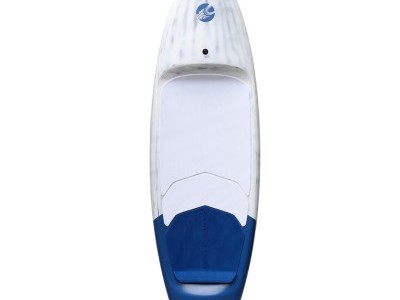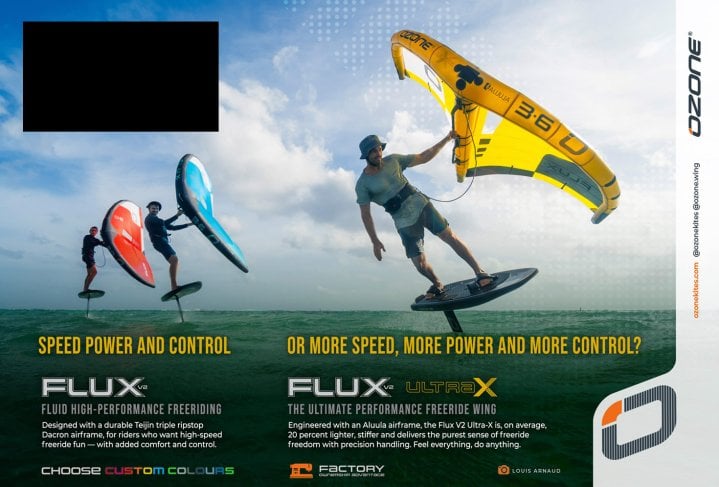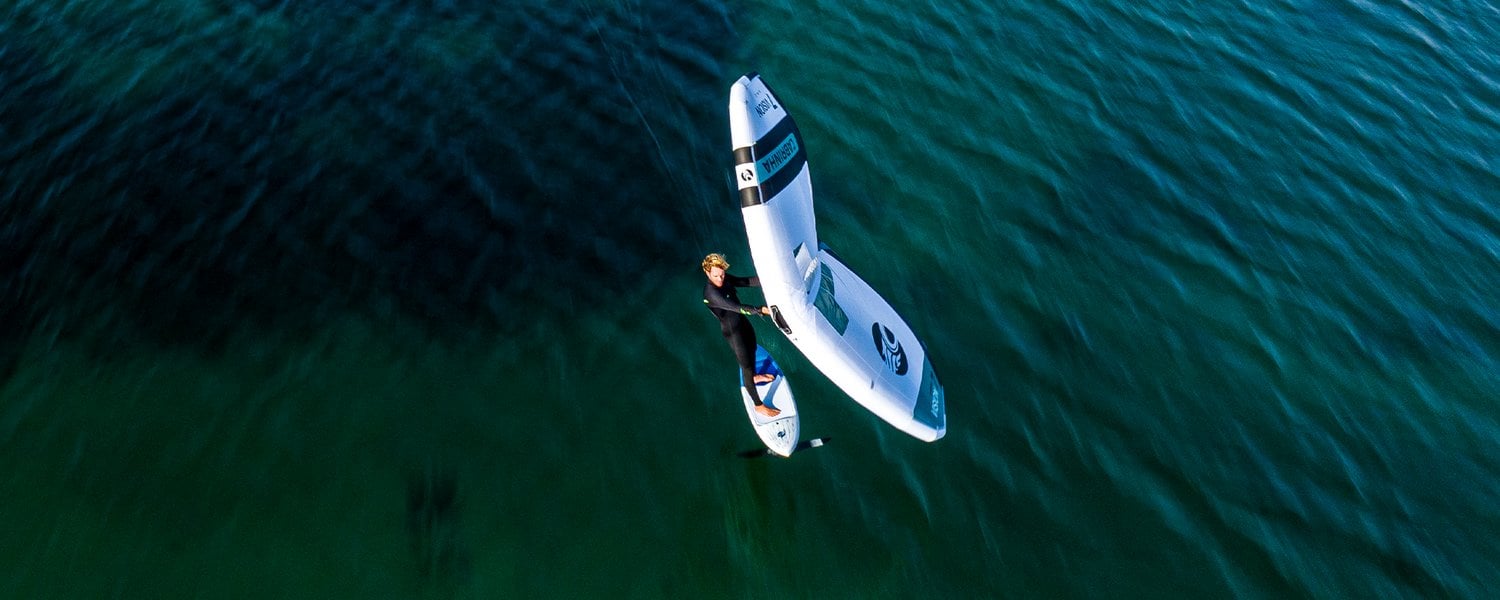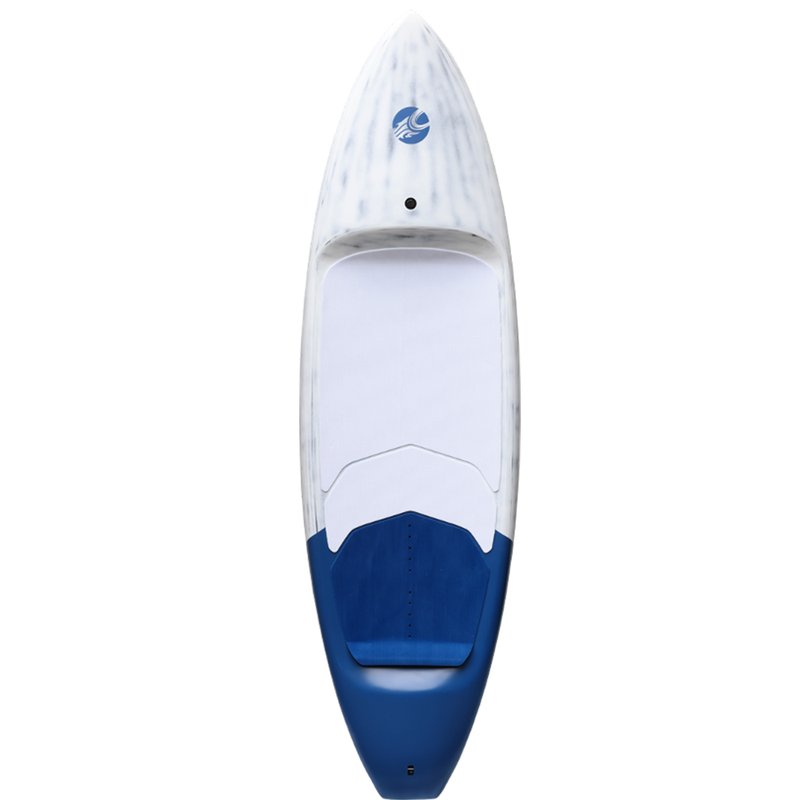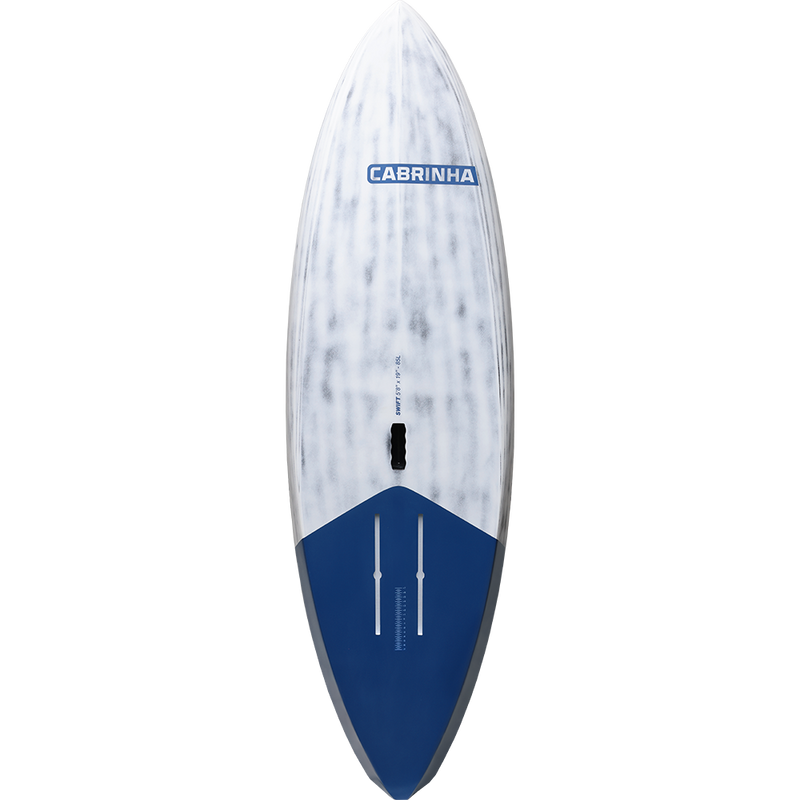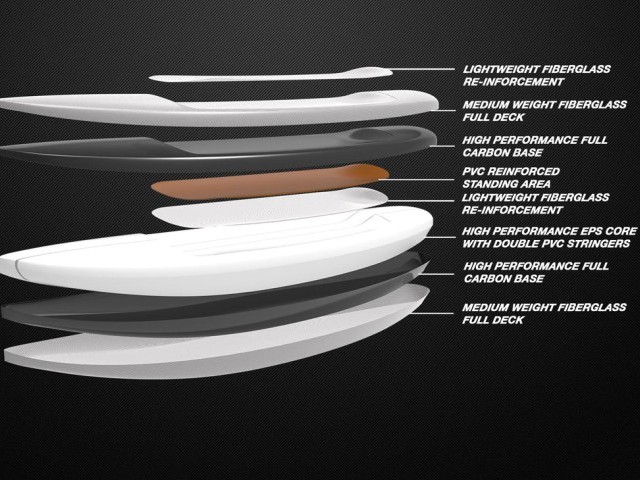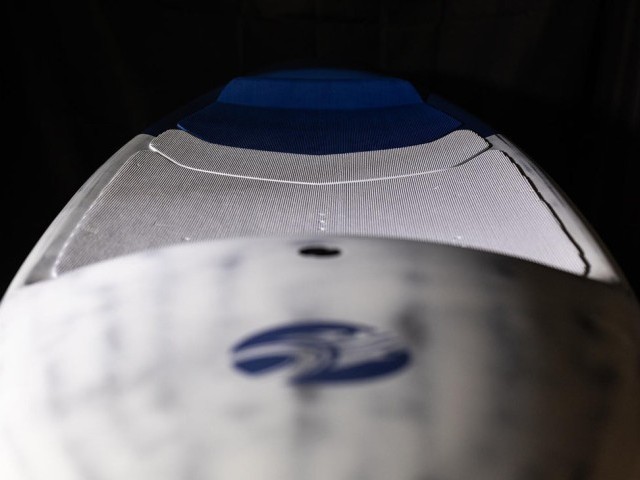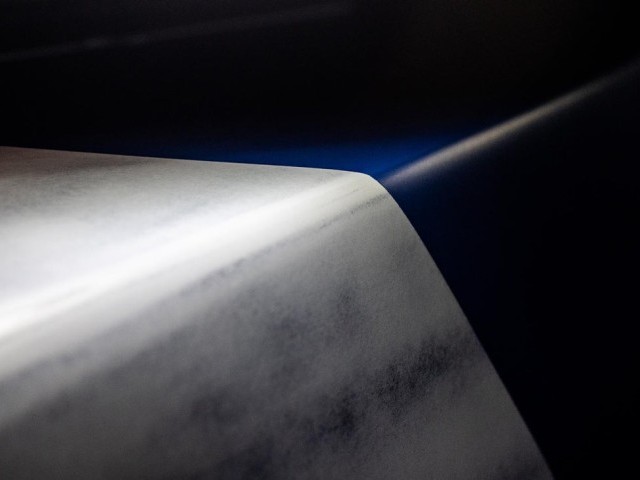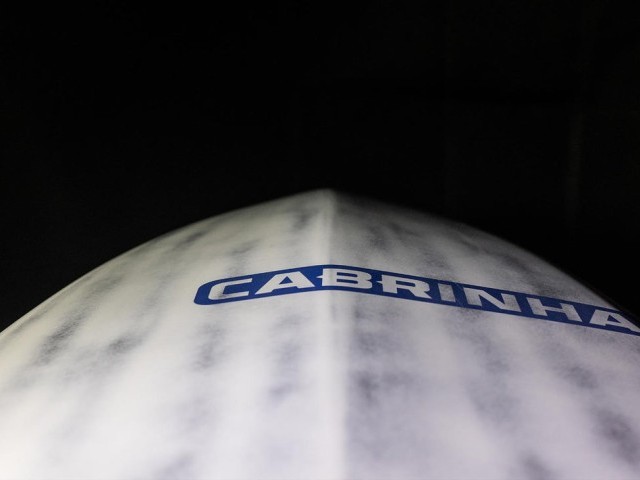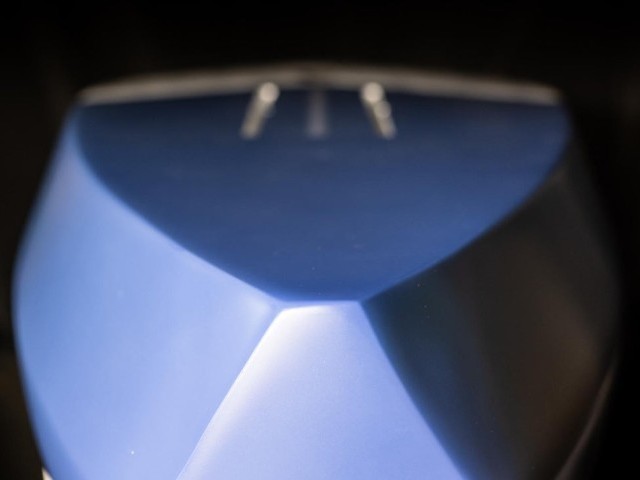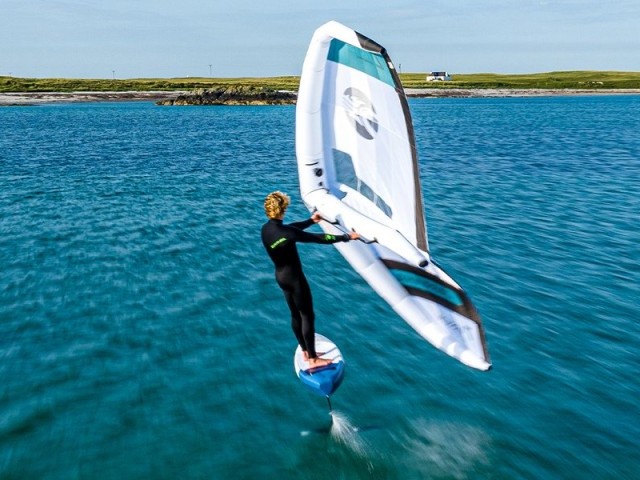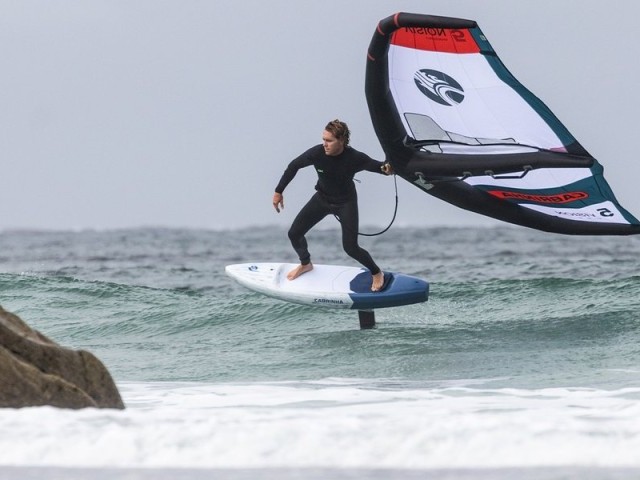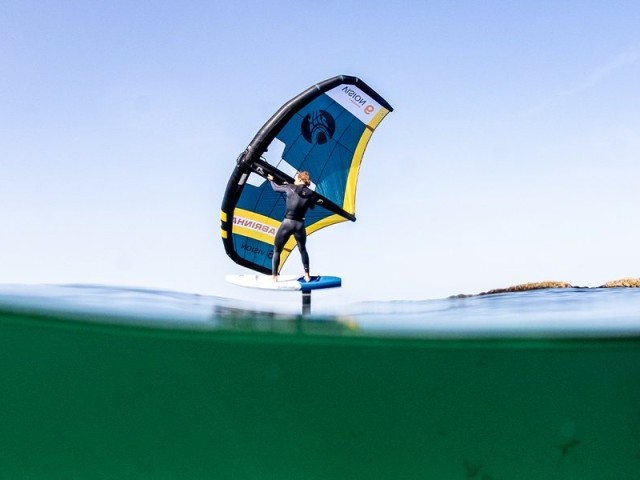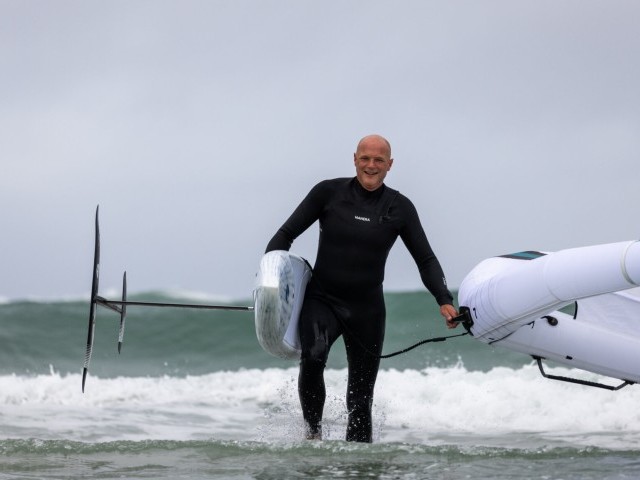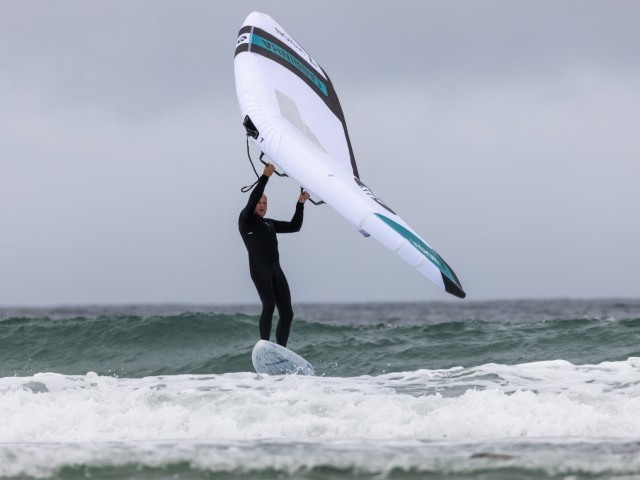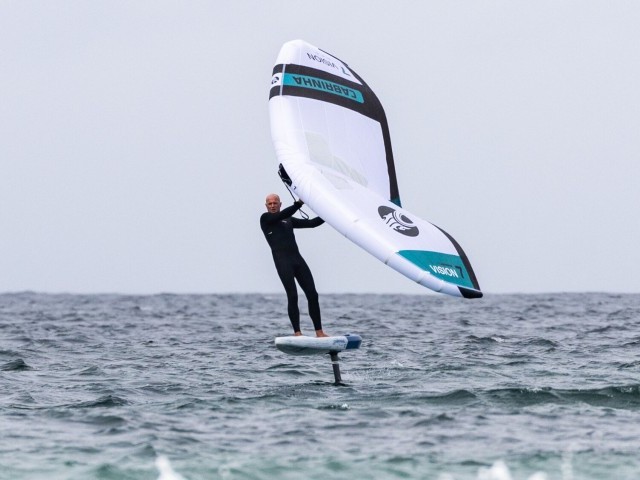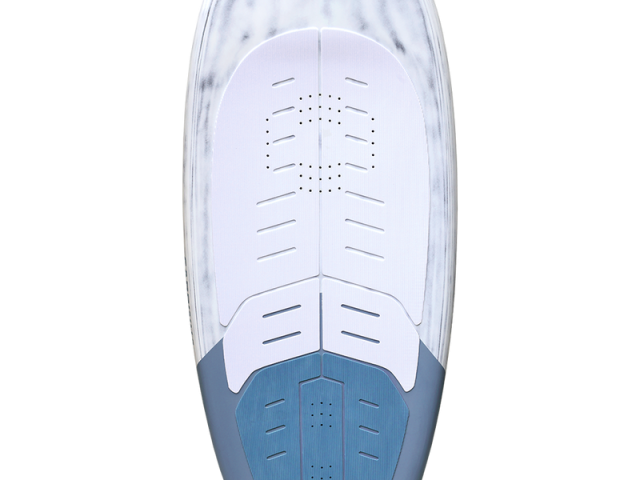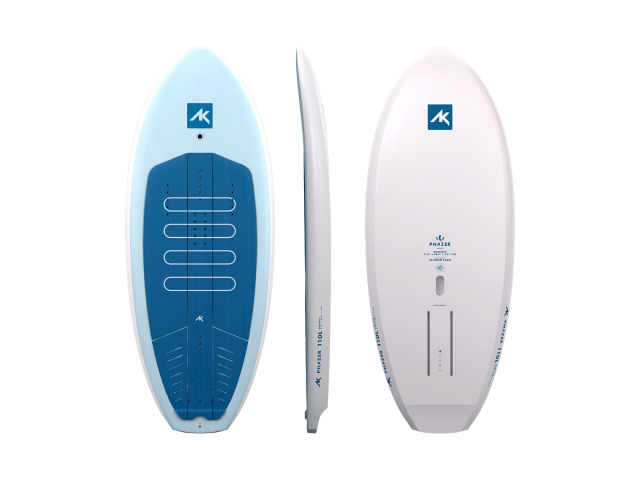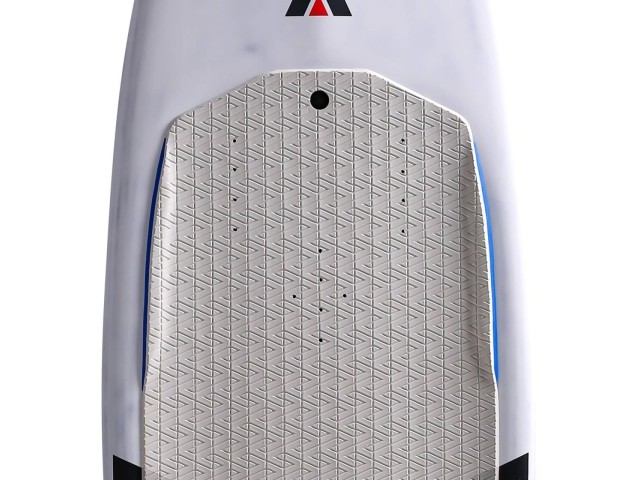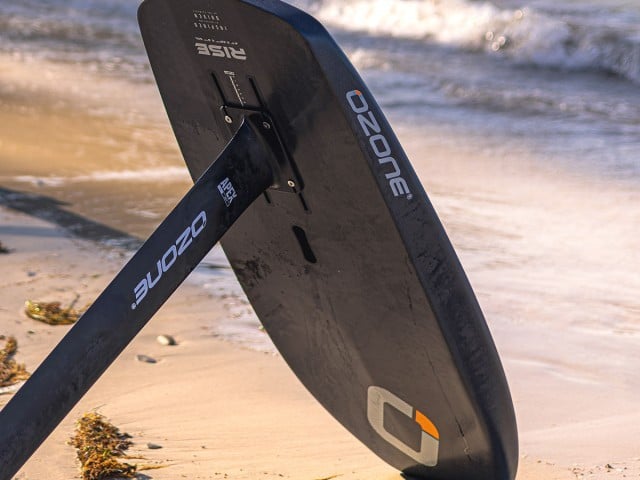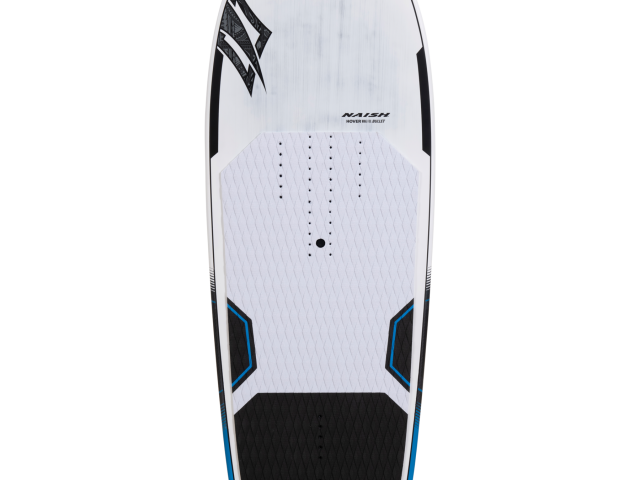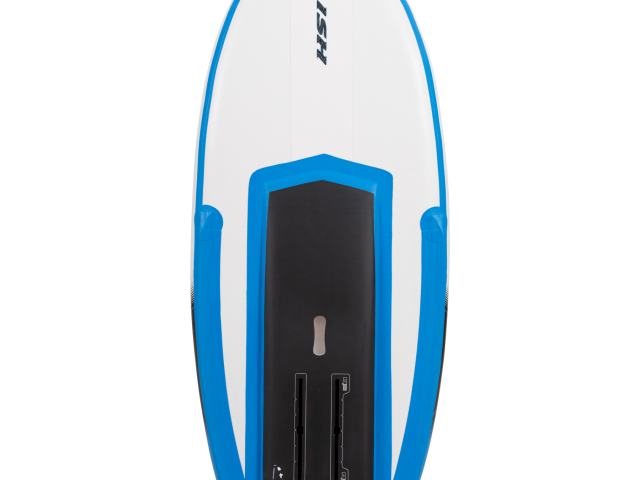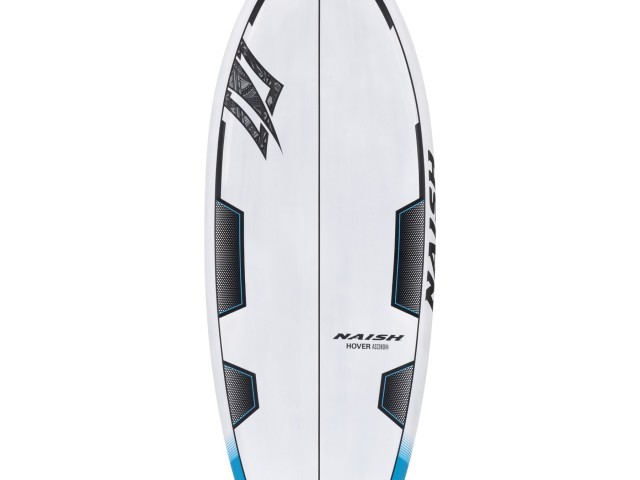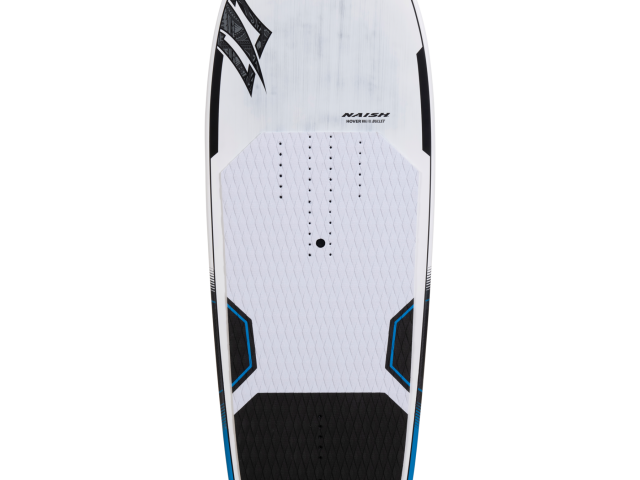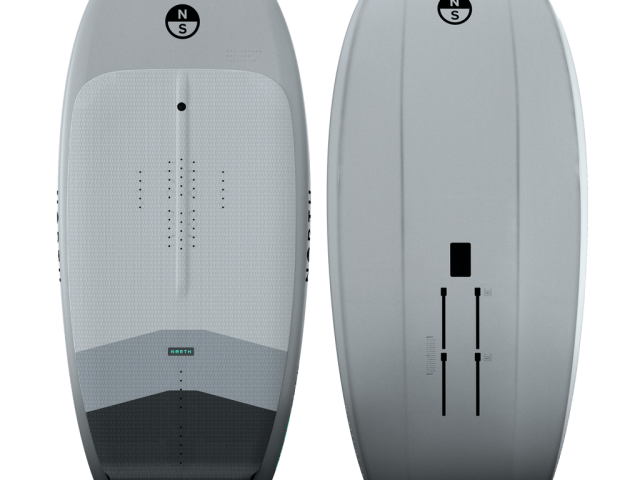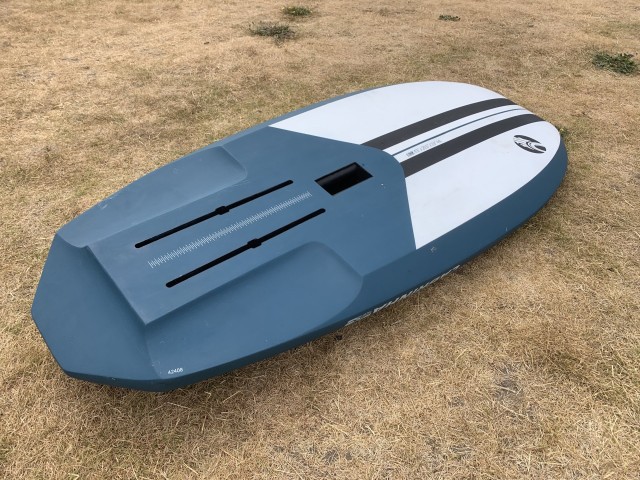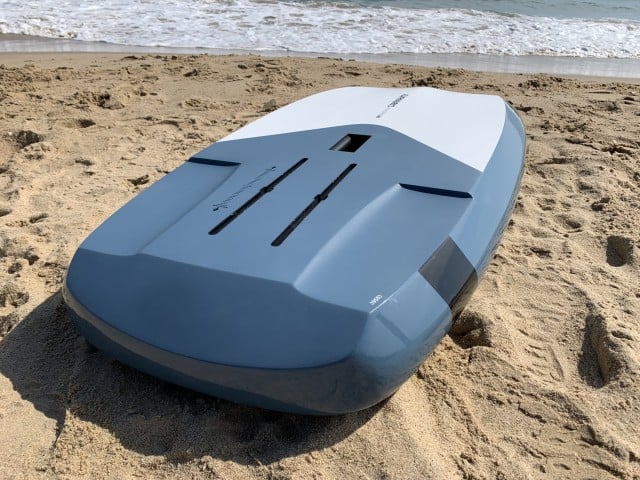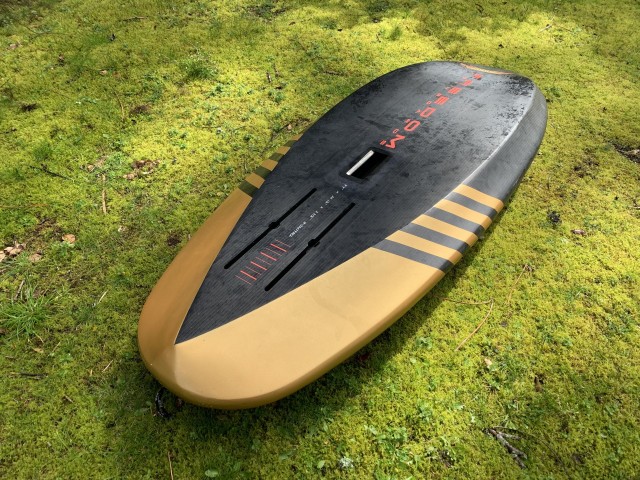Dive into our overview below, and be sure to return for the complete review soon.
The recent downwind foiling hype has kept the pace of foiling equipment development at an all-time high and has had a huge impact on board designs. Facebook groups have been rife with posts about the secondary use case (or primary, depending on your circumstance!) of downwind boards being light wind-winging boards. Brands have managed to persuade many riders into justifying the purchase of a downwind style board, knowing that they’ll also get extra winging sessions with it…plenty of those riders are yet to use it for downwinding. Cabrinha has done something different. They have produced the Swift. This board is inspired by the downwind scene and all associated board design discoveries to optimise efficiency and ease of take-off onto foil but is explicitly dedicated to winging. It is a dedicated performance light wind wing board.
At a Glance
The Swift is a unique and eye-catching design. It is like a scaled-down version of the lovechild of a downwind foil board and an all-around race stand-up paddleboard. It has a lengthened outline, reduced width overall with a pulled-in nose and tail, an aggressive deck cut out and significantly chined rails. The sunken deck is as aggressive as I've seen. This reduces the distance between the rider's feet and the foil mast top plate and the rider's centre of gravity relative to the foil. The deck has a significant full-width camber, an aggressive lip on the kick pad at the tail, and a hard-angled section near the nose around the foot placement area. This cut-out deck leaves a bit of a bulb of volume at the nose.
The base starts with a pointed displacement nose with rounded rails and a fairly deep V, which transitions into a flat base area housing the foil tracks with hard-chined rails. The foil tracks are mounted far forward of the tail and sit neatly behind the board’s carry handle. The flat base continues to the tail as the rails meet at the tucked-in tail. The Swift’s manufacturing details should deliver a responsive ride. The EPS core features two high-density PVC stringers, a PVC sandwich construction under the standing area on the deck, and high-density foil box reinforcements. It is fully wrapped with a carbon fibre lamination.
Sizes: 5’8” x 19” x 5.4” (85L), 6’3” x 20” x 5.4” (100L), 6’9” x 21” x 6.1” (125L)
On the Water
I could not have asked for better conditions to test the Swift as the wind was light, but I was blessed with the swell that resulted in mid-sized critical waves. This is a performance light wind wing board, which is the perfect condition for a good test.
From an efficiency and light wind efficacy perspective, the Swift delivers. Its increased length and reduced width deliver early board speed with minimal wing power compared to a comparable volume wing board with a traditional outline. It is quick to accelerate and directionally stable thanks to its length and the deep V in the nose. This takes a little getting used to but is of great benefit once used to prevent the board from drifting downwind when powering up to try and get on foil. Given that I was on a board that was as good as equal in volume to my weight in kg in a wetsuit, the Swift is incredibly stable considering its low width. Lowering your centre of gravity thanks to the aggressively recessed deck and the flat base and hard edges in the rear half of the board go a long way to eliminating rolling/corking motions.
On medium to large foils, the Swift will have you up in no time with wing power/wing pumping alone, even in light winds. On smaller foils, the pulled-in tail reduces the tail volume sufficiently so you can sink the tail enough when pumping the board to contribute to an earlier take-off. I'm not sure whether this would still be true if you were using a larger Swift with a volume greater than your body weight.
Once up-riding, the additional length of Swift isn’t noticeable. The board felt light and lively and more playful than I expected for a board around 6’. Its pointed nose cuts through the air nicely, minimising wind resistance, and I settled in quickly on this board. Not only did the recessed deck contribute to a board with positive feedback through the board, but it also provided an excellent opportunity to jam your front foot against the front of the cut-out for a more locked-in feel. This seemingly insignificant feature made a huge difference to my session as I felt like I had almost as much control as if I were riding a front foot strap but with all the freedom and playful nature that a strapless platform provides. Playing in the waves with a 5m or smaller wing in 10-15 knots is a real treat. The waves are cleaner, and you don’t hesitate to push yourself and try new things, as there is no risk of failing to get back on the foil if you crash. The significant rocker in the nose allows you to drop down some steeper faces without touching down. This is for the best, as pitch-related touchdowns of the nose (as opposed to a rail hitting the water during a carve) can be hard to recover on the swift unless you’re going reasonably straight, as the deep V in the nose catches as you touch down. That directional stability, which was previously an asset, becomes a hindrance.
On the wave, the Swift feels like a performance board. It is quick to roll, so it is quick to change direction, and thanks to the reduced width, you can bank it aggressively without risking catching the rails. It feels light and stiff and provides plenty of feedback to your feet. As long as you keep a little bit of elevation on foil when entering the wave so that the extra bit of tail that the Swift has behind the mast compared to a more traditional outline wingboard doesn’t catch the water, you’re in for a treat.
Overall
I think Cabrinha is fitting to dedicate its efforts to a light wind-specific wing board. They’ve produced something unique with complex features that combine into something usable. It will allow you to get out on the water in less wind or use a smaller foil than you usually would in any given conditions. I’d consider this as a light wind addition to the quiver for the intermediate and above rider or as a one-board quiver for the intermediate+ or above rider living in an area with predominantly light winds.
Videos
This review was in Issue 20 of Tonic Mag.
For more information visit CabrinhaRelated
By Liam Proctor


